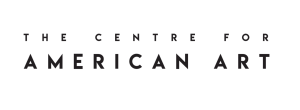This talk concerns the Brazilian artist Lygia Clark’s concept of the “organic line”: an interval of space that appears between a painting and its frame, a door and its lintel, or tiles on the floor. Specifically, it investigates the organic line’s character as neither made nor unmade but not made. How does this quality implicate the gesture of the mark that undergirds artistic practice at its most elemental level, and the various efforts to reimagine or resist this gesture in modernist art? Exploring Clark’s exposure to distinct formulations of the dimensionality of the plane in the years leading up to her discovery of the organic line in 1954, I suggest that Clark reimagined such models in terms of the thickness of space rather than edge. The resulting paradigm allows us to conceive of a negative space that remains negative, rather than being recuperated as a positive entity. This insight, I argue, compels us to consider the double-sided nature of other boundaries such as the limits of a canvas or the temporal demarcations of a score. To this end, I suggest how the organic line might allow us to rethink pivotal episodes in modernist art history such as John Cage’s response to Robert Rauschenberg’s 1951 White Paintings in the scored silence of his famed 1952 work 4’33”.
Irene V. Small is Associate Professor of Contemporary Art & Criticism at Princeton University, where she is also affiliated with the programs in Media & Modernity and Latin American Studies. The author of Hélio Oiticica: Folding the Frame (University of Chicago Press, 2016), she has written for such publications as October, RES: Anthropology and Aesthetics, ARTMargins, Artforum, and Texte zur Kunst. Recent essays have concerned the forensics of free speech, the materialities of Concrete art, and the afterlives of slavery in Tarsila’s 1923 painting A Negra. She is currently the Clark/Oakley Humanities Fellow at the Clark Art Institute.
Organised by Dr Pia Gottschaller (The Courtauld)
